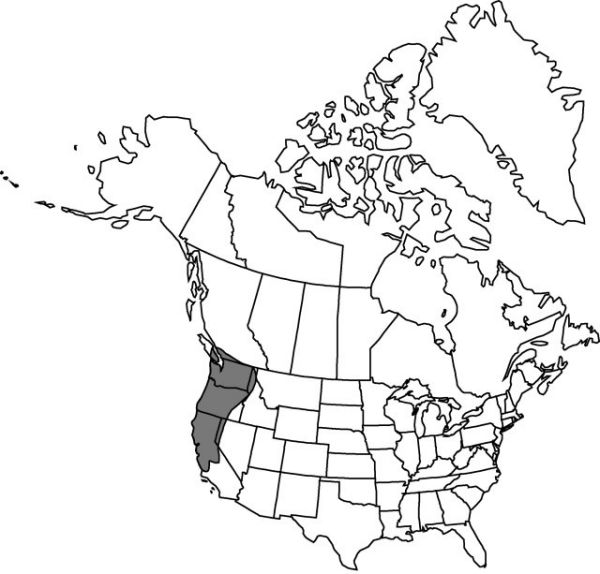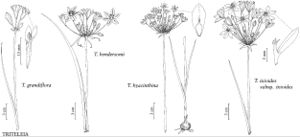Triteleia hyacinthina
Bull. Calif. Acad. Sci. 2: 142. 1886.
Leaves 10–40 cm × 4–22 mm. Scape 30–60 cm, smooth to scabrous. Flowers: perianth white, sometimes flushed purple abaxially, 9–16 mm, tube shallowly bowl-shaped, 2–4 mm, lobes ascending to spreading, with green midvein, 7–12 mm, 2–3 times longer than tube; stamens attached at 1 level, equal; filaments usually triangular-dilated, 2–4 mm, apical appendages absent; anthers whitish to yellow, rarely blue, 1–2 mm; ovary twice as long as stipe; pedicel 0.5–5 cm. 2n = 28, 84.
Phenology: Flowering spring (Mar–Jun).
Habitat: Grasslands, vernally wet meadows, occasionally on drier slopes
Elevation: 0–2000 m
Distribution

B.C., Calif., Idaho, Nev., Oreg., Wash.
Discussion
Triteleia hyacinthina is one of the most widely distributed members of the genus, common in low, moist places such as meadows, vernal pools, and along streams, and found occasionally in drier valley grasslands, foothill woodlands, and closed-cone pine forests. It is cytologically and morphologically variable, with large-flowered forms found in wet places; smaller, scabrous forms found in dry places; forms with rather long pedicels (sometimes recognized as var. lactea); and forms with filaments lacking dilated triangular bases. Most plants have white flowers, but a few interesting forms with restricted distributions have lilac, blue, or even purple flowers. Triteleia ×versicolor Hoover is a sterile hybrid of T. ixioides and T. hyacinthina found in Monterey. Triteleia lilacina is recognized here as a species distinct from T. hyacinthina because of its different base chromosome number (2n = 16) and presence of hyaline vesicles (R. F. Hoover 1955).
Selected References
None.
Lower Taxa
"broad" is not a number."timesaslongasstipe" is not declared as a valid unit of measurement for this property."thicker" is not a number.
